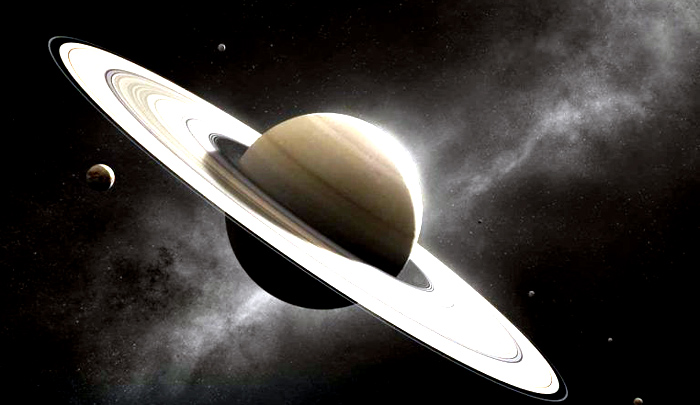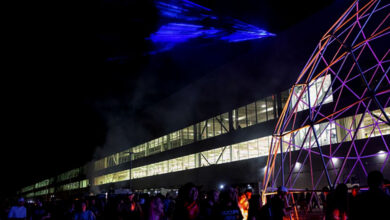Saturn’s rings could have been made by a long-lost moon.

Washington (AFP): Galileo found Saturn’s rings 400 years ago. They are the most interesting thing in our solar system that can be seen with a small telescope.
But experts still can’t agree on how or when they started to form.
The prestigious journal Science put out a new study on Thursday that tries to give a convincing answer.
They think that between 100 and 200 million years ago, an icy moon they called Chrysalis broke up because it got too close to the gas giant.
Most of it hit Saturn, but what was left broke up into small, icy pieces that made the planet’s famous rings.
Professor of planetary sciences at MIT and lead author of the new study, Jack Wisdom, told AFP, “It’s nice to find a plausible explanation.”
Related: NASA is ready to try again to launch Artemis to the Moon.
Saturn, the sixth planet from the Sun, was made at the start of the solar system, 4.5 billion years ago.
But about 30 years ago, scientists thought that Saturn’s rings didn’t form until much later, about 100 million years ago.
The Cassini probe, which went around Saturn from 2004 to 2017, found things that supported the theory.
“But because no one could think of a way to make the rings 100 million years ago, some people have questioned the reasoning that led to that conclusion,” said Wisdom.
Wisdom and his colleagues found a way to explain the timeline and better understand another feature of the planet, its tilt, by building complicated mathematical models.
Saturn is tilted by 26.7 degrees. Since it is a gas giant, you might have thought that the process of gathering matter that led to its formation would have stopped it from tilting.
Interactions with Gravity
Scientists just found out that Saturn’s largest moon, Titan, is moving away from the planet at a rate of 11 centimetres per year.
This changes the rate at which Saturn’s axis of tilt loops around the vertical. This is called “precession” in the scientific world. Think of how a top that spins draws circles.
About a billion years ago, this wobble frequency matched up with Neptune’s wobbly orbit, creating a powerful gravitational interaction called “resonance.”
Scientists said that since Titan kept moving away from Saturn, Saturn had to tilt in order to keep the lock.
But that explanation depended on knowing how the planet’s mass was distributed inside, because the tilt would have been different if most of the mass was at the surface or in the centre.
In the new study, Wisdom and his team used gravitational data collected by Cassini during its “Grand Finale,” which was its last act before plunging into Saturn’s depths, to make a model of the planet’s interior.
The model they made showed that Saturn and Neptune are now slightly out of sync with each other. This meant they needed a new explanation—something big enough to cause such a big change.
When they did the math, they found that a moon that had been lost fit the bill.
Related: NASA delayed the launch of the Artemis moon rocket owing to cooling issues.
“It’s broken up into a bunch of pieces, and then those pieces are broken up even more. “Over time, the pieces roll into rings.”
Wisdom from MIT gave the missing Moon the name Chrysalis because she thought it was like a butterfly coming out of a cocoon.
The team thinks that Chrysalis was about the same size as another moon of Saturn, Iapetus, which is made of water ice and is about the same size as our Moon.
“Therefore, it seems reasonable to think that the chrysalis is also made of water ice, since it needs that to make the rings, which are almost all water.”
Wisdom gave a serious answer when asked if he thought the mystery of Saturn’s rings had been solved.
He also said that there are still “a lot of mysteries” about the Saturn satellite system.





